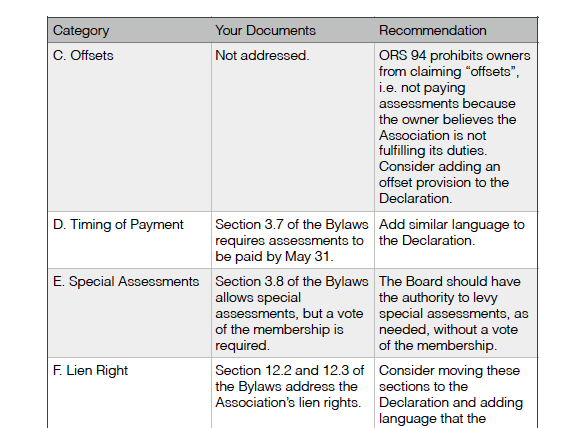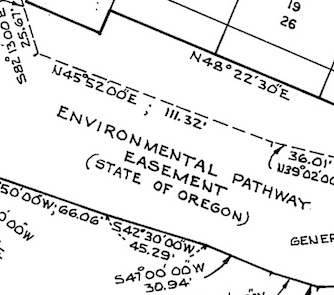The following is a brief summary of cases from around the country. Each case deals with community associations and restrictions on renting.
Watts v. Oak Shores Community Assn., 235 Cal. App. 4th 466 (2015)
A common interest development's homeowners association could adopt reasonable rules and impose fees on its members relating to short term rentals of condominium units because its covenants, conditions and restrictions gave its board of directors broad powers to adopt rules for the development, and nothing prohibited the board from adopting rules governing short-term rentals, including fees to help defray the costs such rentals imposed on all owners; That short-term renters cost the association more than long-term renters or permanent residents was not only supported by the evidence, but experience and common sense placed the matter beyond debate. Watts v. Oak Shores Community Assn., 235 Cal. App. 4th 466 (2015)
The Association has a rule stating that the minimum rental period is seven days. The Association's general manager testified that, based on his discussion with Board members, staff and code enforcement officers, as well as his review of gate and patrol logs, short-term renters cause more problems than owners or their guests. The problems include parking, lack of awareness of the rules, noise and use, and abuse of the facilities. Expert James Smith testified that, unlike guests, who are typically present with the owners, short-term renters are never present with the owner. Guests tend to be less destructive and less burdensome. Short-term renters require greater supervision and increase administrative expenses. A $325 fee is charged to all owners who rent their homes. A 2007 study calculated each rental cost the Association $898.59 per year.
Slaby v. Mt. River Estates Residential Ass'n, 100 So. 3d 569 (2012)
Property owners who engaged in a short-term rental of their cabin were not in violation of a restrictive covenant that provided for "single family residential purposes only," as the covenant did not require only owner occupancy, there was no required duration of occupancy indicated, and the rental was not a commercial use.
Yogman v. Parrott, 325 Ore. 358 (1997)
The ordinary meaning of "residential" does not resolve the issue between the parties. That is so because a "residence" can refer simply to a building used as a dwelling place, or it can refer to a place where one intends to live for a long time. In the former sense, defendants' use is "residential." The people who rent defendants' beach house use it as a temporary [***6] home, and their purpose is to engage in activities commonly associated with a dwelling place. For example, the record shows that they eat, sleep, bathe, and watch television there. On the other hand, if "residential" refers to an intention to live in a home for more than a temporary sojourn or transient visit, even defendants' own use of the property, as well as their rental use, is not "residential." Because of the different possible meanings of "residential," this portion of the restrictive covenant is ambiguous.
Seagate Condominium Association. v Duffy (1976, Fla App D4) 330 So 2d 484.
A provision of a condominium declaration which barred the leasing of any units except for limited periods of time under exceptional circumstances with the approval of the condominium association was held not to be unreasonable by the court.The court concluded that such a bar was not an unlimited or absolute restraint on alienation and was therefore to be judged in terms of its reasonableness. Noting that the problems of condominium living required a greater degree of control on the rights of individual unit owners than might be tolerated under traditional forms of ownership, the court concluded that the bar against leasing was neither an unlimited nor unreasonable restraint on alienation. The restriction was not unlimited inasmuch as the association could suspend its application in cases of hardship, and the court found it to be reasonable in view of the objective of inhibiting transiency and imparting a degree of continuity of residence.
Breene v Plaza Tower Asso. (1981, ND) 310 NW2d 730,
The court held that an amendment to a condominium declaration which prohibited the leasing of a condominium unit to a nonowner except in exceptional circumstances was invalid as applied to a condominium owner who purchased his unit prior to the adoption of the leasing restriction. Although the court noted that the condominium concept inherently required each owner to give up a certain degree of freedom he might otherwise enjoy in privately owned property, the court stated that such restrictions, to be enforceable, must be within the applicable statutory structure. Reasoning that the statutory provisions relating to condominiums contemplated that recording of the declaration, restrictions, and bylaws would place prospective purchasers and owners on notice as to the restrictions affecting their interest in the property, the court concluded that as a prerequisite to enforceability, the restriction must be recorded prior to the conveyance of any condominium unit. Consequently the leasing restriction adopted after the purchase of the condominium unit was not enforceable as an equitable servitude, the court said, except through the purchaser's acquiescence.
Re 560 Ocean Club, L.P. (1991, BC DC NJ) 133 BR 310.
Condominium association had no authority to restrict leasing of condominium units to certain minimum periods of time during summer months and during other times where restrictions on leasing, to be valid, had to be designated in recorded master lease and could not be inconsistent with state's condominium statute, and in instant case there was no specific reference in master lease to opportunity of association to restrict or limit duration of leases.
Woodside Village Condominium Ass'n, Inc. v. Jahren, 806 So. 2d 452 (Fla. 2002).
Condominium owners were bound by amendment to declaration that restricted leasing a condominium to nine months in a 12-month period, where owners were on notice when they purchased their units that the leasing provisions in the declaration could be changed byamendment, amendment was properly enacted under the amendment provisions of the declaration, and leasing restrictions did not violate any public policy or owners' constitutional rights.
Mullin v. Silvercreek Condominium Owner's Ass'n, Inc., 195 S.W.3d 484 (Mo. Ct. App. S.D. 2006).
Section of the condominium declaration stating that no business, trade, occupation or profession of any kind shall be conducted, maintained or permitted on any part of the property was not intended to restrict the right of any condominium unit owner to rent or lease his condominium unit from time to time.







